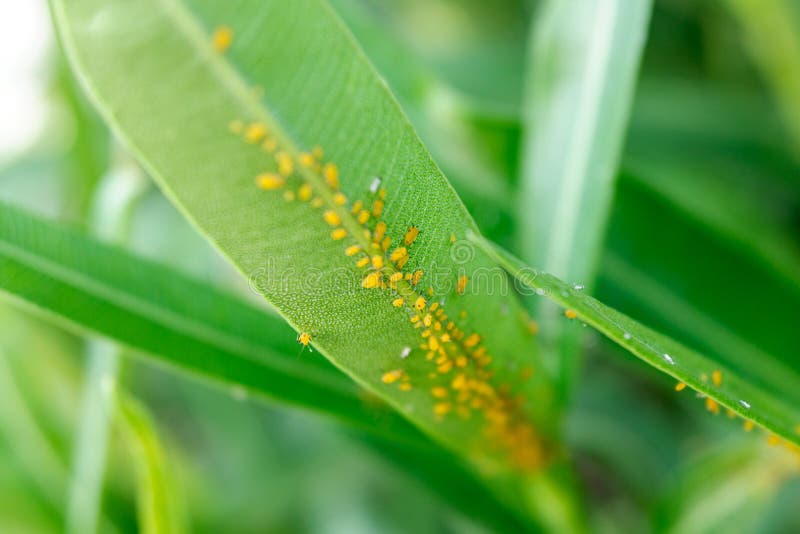Apple Growers Face Challenges: Rosy Apple Aphid Infestation And Harvest Reduction

Table of Contents
Understanding the Rosy Apple Aphid Threat
The rosy apple aphid (Dysaphis plantaginea) is a sap-sucking insect that inflicts considerable damage on apple trees. Its lifecycle involves multiple generations throughout the growing season, starting with overwintering eggs that hatch in spring. These aphids then rapidly multiply, colonizing leaves, shoots, and fruit. Visible signs of infestation include curled and distorted leaves, often exhibiting a reddish discoloration. The aphids' feeding weakens the tree, impacting its overall health and reducing fruit quality.
- Feeding damage leads to stunted growth. The aphids' piercing-sucking mouthparts extract sap, depriving the tree of essential nutrients.
- Honeydew secretion attracts sooty mold. This sticky substance excreted by the aphids provides a breeding ground for sooty mold, which further hinders photosynthesis by blocking sunlight.
- Infestations can significantly reduce fruit size and marketability. Infected apples are often smaller, misshapen, and unsuitable for sale.
- Severe infestations can lead to complete crop failure. In extreme cases, the tree's vitality is so compromised that it fails to produce any marketable fruit.
Impact on Apple Harvest and Economic Losses
Rosy apple aphid infestations can significantly reduce apple yields. Studies have shown yield reductions ranging from 20% to over 50% in severely infested orchards, depending on the timing and intensity of the infestation. The economic consequences for apple growers are substantial.
- Decreased yield translates to lower profits. Reduced harvests directly impact a grower's income, affecting their livelihood and the viability of their business.
- Increased costs associated with pest control measures. Managing rosy apple aphid infestations requires significant investment in pesticides, equipment, and labor.
- Impact on the price of apples for consumers. Reduced supply due to widespread infestations can lead to higher apple prices in the market.
- Potential for job losses within the apple industry. Severe economic setbacks in apple production can lead to job losses throughout the supply chain.
Effective Strategies for Rosy Apple Aphid Management
Effective rosy apple aphid management requires a multi-pronged approach using Integrated Pest Management (IPM) strategies. This involves combining various methods to minimize the use of chemical pesticides while maximizing control.
- Monitoring aphid populations: Regular orchard inspections are crucial for early detection. Visual checks and sticky traps can help assess aphid numbers and timing of interventions.
- Biological control: Introducing natural predators such as ladybugs, lacewings, and parasitic wasps can help control aphid populations naturally.
- Chemical control: While chemical insecticides can effectively control rosy apple aphids, their use should be carefully considered due to potential environmental impacts and the development of resistance. Always follow label instructions and consider less-toxic options.
- Cultural control: Proper orchard sanitation, including removing infested leaves and pruning to improve air circulation, can help reduce aphid populations. Careful selection of apple cultivars can also play a role, as some varieties are less susceptible to infestation.
The Role of Technology in Rosy Apple Aphid Control
Technology is playing an increasingly important role in improving rosy apple aphid control.
- Drone technology: Drones equipped with high-resolution cameras can provide aerial views of orchards, allowing for early detection of infestations even in large areas.
- Precision agriculture: GPS-guided sprayers allow for targeted pesticide application, minimizing chemical use and environmental impact.
- Data analytics: Collecting data on aphid populations, weather patterns, and orchard conditions can help predict potential outbreaks and optimize control strategies.
Protecting Apple Harvests from Rosy Apple Aphid Infestation
Rosy apple aphid infestations present a significant challenge to apple growers, impacting yields, profitability, and the overall sustainability of apple production. Implementing effective rosy apple aphid control strategies is paramount for maintaining healthy orchards and securing harvests. Ignoring this pest can have severe economic and environmental consequences. Proactive management, incorporating monitoring, biological control, and judicious use of chemical controls, alongside the implementation of innovative technologies, is crucial for protecting apple orchards from rosy apple aphids and ensuring the future of this vital agricultural commodity. Growers should prioritize implementing comprehensive rosy apple aphid management plans to safeguard their harvests and contribute to a sustainable apple industry.

Featured Posts
-
 Actor Mark Rylance London Parks Transformed Into Prison Camps By Festivals
May 19, 2025
Actor Mark Rylance London Parks Transformed Into Prison Camps By Festivals
May 19, 2025 -
 Chateau Diy Transforming Your Home With Diy Chateau Style
May 19, 2025
Chateau Diy Transforming Your Home With Diy Chateau Style
May 19, 2025 -
 Switzerlands Eurovision 2025 Plans Luca Haennis Participation
May 19, 2025
Switzerlands Eurovision 2025 Plans Luca Haennis Participation
May 19, 2025 -
 Royal Mail Challenges Unnecessary Ofcom Regulation
May 19, 2025
Royal Mail Challenges Unnecessary Ofcom Regulation
May 19, 2025 -
 Why Colin Jost Earns Less Than Wife Scarlett Johansson Exploring The Pay Gap
May 19, 2025
Why Colin Jost Earns Less Than Wife Scarlett Johansson Exploring The Pay Gap
May 19, 2025
